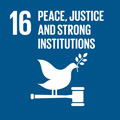- Docente: Annalisa Pelizza
- Credits: 6
- SSD: SPS/08
- Language: Italian
- Teaching Mode: In-person learning (entirely or partially)
- Campus: Bologna
- Corso: First cycle degree programme (L) in Philosophy (cod. 9216)
-
from Nov 10, 2025 to Dec 17, 2025
Learning outcomes
At the end of the course students will have acquired basic skills and tools to analyze the different forms of communication present in contemporary society, knowing how to grasp analogies and differences between types and contexts of interaction (face-to-face or remote) as well as between unequal opportunities of access to communication practices.
Course contents
Course program for both attending and non attending students:
Week 1 - Introduction to the Sociology of Communication. Social theories
Week 2 -Symbolic interactionism and interpersonal communication
Week 3 - Interaction as a ritual and the social construction of reality
Week 4 - Mass media theories
Week 5 -The network society and digital media
Readings/Bibliography
The course privileges the reading of original sources. In addition, a manual in social theories (Collins, R. (1992) Teorie sociologiche. Bologna: Il Mulino) provides continuity between the different topics for those students who have not received a previous training in sociology. On Virtuale you can find a comparison table for pages from Collins 1992 edition and Collins 2006 edition.
To ensure quality interaction in class, each set of week-related texts must be read before class. The reading material is available either on Virtuale or at the library of Media Studies in via Azzogardino.
Week 1 - Introduction to the Sociology of Communication. Elements of social theories
Collins, R. (1992) Teorie sociologiche. Bologna: Il Mulino, pp. 15-20, 469-485, 237-249.
Week 2 – Symbolic interactionism and interpersonal communication
Collins, R. (1992) Teorie Sociologiche. Bologna: Il Mulino, pp. 289-301, 334-338, 257-263.
Week 3 – Interaction as a ritual and the social construction of reality
Goffman, E. (1998) L’ordine dell’interazione, Roma: Armando.
Collins, R. (1992) Teorie sociologiche. Bologna: Il Mulino, pp. 331-343, 345-347.
Week 4 - Mass media theories
Wolf, M. (1985/1993) Teorie delle Comunicazioni di Massa. Milano: Bompiani, pp. 16-58.
Thompson, J.B. (1998) Mezzi di Comunicazione e Modernità. Bologna: Il Mulino: 121-168.
Week 5 - The network society anddigital media
Castells, M. (2002) La nascita della società in rete. Milano: EGEA, pp. 390-419.
Miconi, A. (2007) “I ‘new media’ e la società delle reti”, in Abruzzese, A. e Mancini, P. Sociologie della Comunicazione. Roma-Bari: Laterza, pp. 249-265.
Autorità per le Garanzie nelle Comunicazioni (2018) News vs. Fake nel Sistema dell’Informazione. Interim report indagine conoscitiva Del. 309/16/cons, pp. i-ix, 74-106.
Recommended reading:
Pelizza, A. (2018) Communities at a Crossroads. Material semiotics for online sociability in the fade of cyberculture. Amsterdam: Institute of Networked Cultures, pp. 65-71. Disponibile open access su https://networkcultures.org/blog/publication/tod-28-communities-at-a-crossroads/
Cukier, K.N and Meyer-Schönberger, V. (2013, May/June) "The Rise of Big Data. How It's Changing the Way We Think About the World". Foreign Affairs 92(3), pp. 28-40.
Teaching methods
Lectures, class discussions, empirical analysis of case studies, student presentations. A high degree of interactivity is pursued.
Assessment methods
- December 2025 for all students
- January 2026 for all students
- April 2026 for all students
- July 2026 for all students
- September 2026 for all students
- November 2026 for students who did not pass
Students with Specific Learning Disorders (SLD) or temporary or permanent disabilities:
it is recommended to contact the relevant University office in advance (https://site.unibo.it/studenti-con-disabilita-e-dsa/it ). The office will be responsible for proposing any necessary adjustments to the interested students. These adjustments must, however, be submitted at least 15 days in advance for approval by the instructor, who will assess their appropriateness in relation to the learning objectives of the course.
Teaching tools
Classes are conducted in presence, with the support of computer, video beamer and digital whiteboard.
The teaching material consists of the syllabus, presentations prepared by the teacher and case studies. When not protected by copyright, the teaching material is made available to students through the teaching platform of the University of Bologna. Copyrighted texts in the syllabus are available at the library of Communication and at other libraries of the University of Bologna.
Office hours
See the website of Annalisa Pelizza
SDGs



This teaching activity contributes to the achievement of the Sustainable Development Goals of the UN 2030 Agenda.
